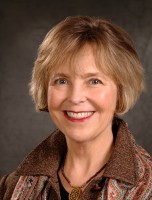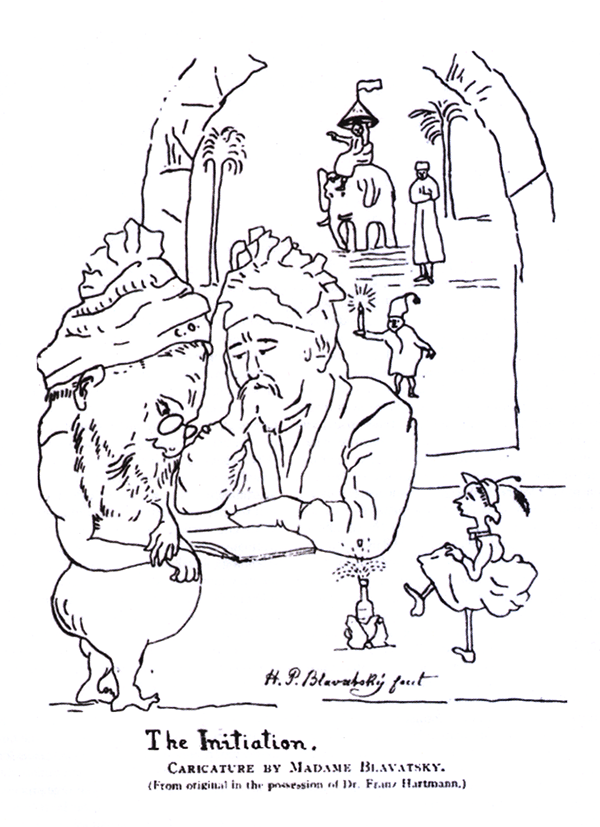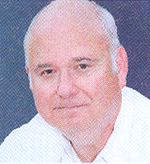Printed in the Winter 2025 issue of Quest magazine.
Citation: Sugg, Judith, "Unbecoming" Quest 113:1, pg 40-42
By Judith Sugg
 What is this elusive entity called personality? Psychology offers explanations, such as character traits and consistent patterns of thinking, feeling, and behavior. Personality is what an individual does consistently and will likely do in the future.
What is this elusive entity called personality? Psychology offers explanations, such as character traits and consistent patterns of thinking, feeling, and behavior. Personality is what an individual does consistently and will likely do in the future.
Yoga tells us that lifetimes create patterns, even knots, in the body that require release in order to be free of their influence. The most essential patterns are those of misunderstanding the nature of Reality, leading to confusion and pain. We see ourselves as what is contained inside our skin and thus as separate and subject to the memories, imaginings, fears, and longings of our ever-changing mind and body. With intent and practice, we sufficiently settle the mind to become open and still.
Spiritual traditions often describe personality as something to be dropped, dissolved, released, or freed of. It was an aha moment for me when a wise Theosophist said of an ongoing dispute, “It’s just their personalities.” This statement acknowledged the conflict, the agents, and the distinction between personality and the ever-present Spirit.
We believe that the entity bearing our name is real and special. For young children, this is a part of normal development and an aid to navigating the world. As adults, it is so profoundly wound into our psyche, so unconscious, that we are startled by events that demonstrate the contrary.
Many of our fondest desires center on having others recognize our specialness. In our minds, whether we are happy or suffering, we are the center, the star of the show, and the focus of attention. Being special means that we exist in comparison to others. We feel joy when we are ahead or feel anger or sorrow when we are behind. We take the self-talk in our head as reality, so we remain isolated.
Personality is a handy concept. If I know your tendencies, I predict that you will be agreeable, dependable, likely to succeed, open to ideas, fearful, steady, or changeable. As others respond to our personality, the illusion solidifies. That feeling of “this is like me” is a sense of security, whether we like the “me” or not. The more we engage in this “me” role, the dearer it becomes. What I do right belongs to me. When I suffer, it is because I am misunderstood. It seems impossible to step out of the drama of the role and see personality for what it is: imaginary.
A Course in Miracles describes specialness as the grand illusion of existence and the “great dictator of wrong decisions.” Could we hate if we were not in competition? Could I be special if I didn’t define the “other” as someone to compete with? “To value specialness is to esteem an alien will to which illusions of yourself are dearer than the truth” (A Course in Miracles, Text, 502).
Spiritual teachings often advise against taking this personality seriously—it’s a lie, a confusion, an error. We spend time and energy improving our body, mind, health, and economics. Sometimes we seek to strengthen relationships and find alignment with a spiritual or philosophical system that seems to confirm our views. We build what we deem is good in our character. Yet spiritual teachings also call us to leave these patterns in the dust. They call us to relinquish our specialness and become the light we always were but haven’t been able to imagine. How do we harmonize these seemingly disparate goals?
Jean Klein, a spiritual teacher in the Hindu Advaita Vedanta tradition, would say that becoming is the issue. We are almost always in the becoming mode; we are never just here. We search for experience, not truth. We desire many things, feelings, and achievements. But when we finally get the object of desire, it has little meaning.
There is an old story of a student asking the master how long it takes to be enlightened. The master says, “Five years.” The student asks, “But what if I really try?” The master says, “Ten years.” In Klein’s terminology, setting the goal (faster enlightenment) sets the student in the becoming mode, waiting for the next experience, and thus sets up the pattern that sustains the personality.
Experience is not Reality. An experience may be incredible, and yoga, meditation, prayer, hypnosis, singing, drugs, and other things can give us an experience of peace and joy. We like that experience—I like that experience. But the experience too is measured on the scale of like and dislike, and we don’t break free. In fact, we addict ourselves to the experience. We let the experience of a positive emotion, like love, joy, or peace, become an object of desire.
As a yoga teacher of thirty years, I love the happiness and release the practice brings. I also love seeing students have their own experiences of joy and stress release. As wonderful as that is, it is not freedom from the judging mind. It is still pleasant versus unpleasant, good or bad, and it is still the tyranny of personality.
Klein views discernment as “the only decisive fact in knowledge” (Klein, Be Who You Are, 63). Although he offers no formulas or prescriptions, he speaks of discrimination as an essential act. The mind can learn to discriminate between ego/personality and what is not. What is not the personality is impersonal, present, transparent, curious, alive, and open. Judgment relies on memory and creates more memory, more fuel. “Triumph is what fortifies the ego, and disaster is what destroys it. Now, the ego is an error. The error of separatism, of the wave which takes itself to be distinct from the ocean” (Klein, Be Who You Are, 68).
The distinction between what is Real and what is not is at the heart of the teachings of the Samkhya, another school of Hindu philosophy. Samkhya is usually translated as enumeration. Discernment is the reason for enumerating all the aspects that are not pure consciousness. Why enumerate them? So one knows what is not Real. The study of these enumerated principles “implies much more than ordinary study. It implies, rather, a fundamental change in the back orientation of a man. It implies a kind of intuitive realization or discrimination which separates out pure consciousness from everything that is not consciousness” (Larson, 205).
Klein offers some practical advice on avoiding the trap of experience and the mental cycle of judgment. He advocates moment-by-moment observation of oneself. Observing oneself involves psychological separation, stepping out of one’s shoes and emotions, and witnessing the cycle of reaction and desire. As long as we are caught in these cycles, we are trapped in becoming something, getting happiness, staying safe, avoiding pain, gaining attention—whatever our conditioning entails. The cycles don’t end; they create more reactions, projections, and desires.
Eventually, without intervention or intention, a “certain elimination” occurs, and what is left to observe subsides into nothingness. There is a loss of fascination with the desires of the personality. Our attention is no longer gripped by whatever arises, and increased clarity, honesty, and stillness arise. There is less like and dislike, good and bad, winning or losing.
Personality does what it has always done: comparing, judging, desiring, being disappointed, constantly becoming, obtaining, reaching. In other words, we are never here right now. How is it possible to halt the return to the old self?
As a society, we pay attention to the body in terms of looks and health. We pay scant attention to the connection of thought and body. Although any reaction results in both thought and a contraction in the body, we overlook the indicators of the body and the resulting emotions. We read tension in the belly as fear, then we hold on to the fear with thoughts and images in our minds. What is your favorite way of stopping that transformation?
When we meditate, drama subsides. We feel uplifted, open, free, and compassionate. Meditation training allows us to slow down and step back out of the habit of reaction. We note the gigantic distances between the end of one breath and the beginning of the next, and we drop into more presence. With the help of distance and perspective, we take time to assess what is happening. We note the reaction of the body, not just the mind, and we consciously release the body’s tension and contraction. We return to the present.
Klein spent much time developing deep and minute relaxation at the body level—not to feel good, but to allow the body to fulfill its function. The deep practices of savasana or yoga nidra begin this journey. However, they are still experiences; they are not complete or permanent.
Imagine a scene where another person is extravagantly praised in your presence for actions you have done. Notice the thought, which may be akin to anger or jealousy. Observe the contraction and the emotional irritation. Use the muscle of discrimination to slow down and notice the pattern, the cycle of reactions, and the tension. What is this truly about? What is the underlying need at a psychological level? Is it a bid for attention? Is it self-criticism? Safety? Peace? Psychological understanding is vital in the moment. We want to be noticed so we feel loved. We want to ensure safety and feel complete. Whatever convoluted strategies we use to feel good psychologically, acknowledging the need helps unwind the cycle and the conditioning.
Examining these needs and tracing them to their core provides release and peace. Yet, it is still the experience of the personality. What translates this into the ultimate discrimination of Real and not real? Klein offers only subtle pointers but emphasizes that detachment from the personality means the absence of desire, because we have realized that what we desire will never keep its promises. The moment-to-moment releasing of conditioning, the relinquishment of goals, the escape from comparison and competition, and the letting go of distinction, of specialness, are all a part of it. When we let go of becoming, we are.
Try this experiment: Remember a slightly disturbing interaction with one person. As you remember, in your mind’s eye, bring the other person to your eye level. Look at them directly at eye level. This isn’t about height or actual discrepancy; it is about how we remember someone as above us or beneath us. It’s how we identify whether a person is better, more powerful, or less. Bringing them to eye level in our memory is a small step in releasing habits of comparison.
Reading Klein is like reading a hologram: it is whole in each part. It reflects the spirit he brought to his teaching, the presence he extends through his words. His highest teaching is stillness in the silence of listening (much like the inner sound that kills the outer in The Voice of the Silence). Klein notes that when our senses are free of motive, they no longer belong to the body. Attention without qualification appears as a global presence: “In the end even hearing and seeing dissolve into this presence and you are one with it. Ultimately there is no longer a subject who sees nor an object which is seen. There is only oneness” (Klein, Ease of Being, 7).
Sources
A Course in Miracles. 3d ed. Tiburon, Calif.: Foundation for Inner Peace, 2007.
Klein, Jean. Be Who You Are. Oakland, Calif.: Non-Duality Press, 1978.
———. The Book of Listening. Oakland, Calif.: Non-Duality Press, 2008.
———. The Ease of Being. Salisbury, U.K.: New Sarum Press, 2020.
———. Who Am I? The Sacred Quest. Longmead, U.K.: Element, 1988.
Larson, Gerald. Classical Samkhya. New Delhi: Motilal Banarsidass, 2011.
Judith Sugg, PhD, is a counselor, psychology instructor, and yoga teacher. Her graduate work was in the psychology of yoga and the Samkhya, and she wrote the Study Guide for the Yoga Sutras for the Theosophical Society.



 Erica Georgiades is the director of the European School of Theosophy and the School of Wisdom. She is also the president of the Theosophical Society in Greece.
Erica Georgiades is the director of the European School of Theosophy and the School of Wisdom. She is also the president of the Theosophical Society in Greece. Doss McDavid has been a member of the Theosophical Society since 1969. He is a professor emeritus at the University of Texas Health Science Center at San Antonio.
Doss McDavid has been a member of the Theosophical Society since 1969. He is a professor emeritus at the University of Texas Health Science Center at San Antonio. What is this elusive entity called personality? Psychology offers explanations, such as character traits and consistent patterns of thinking, feeling, and behavior. Personality is what an individual does consistently and will likely do in the future.
What is this elusive entity called personality? Psychology offers explanations, such as character traits and consistent patterns of thinking, feeling, and behavior. Personality is what an individual does consistently and will likely do in the future.